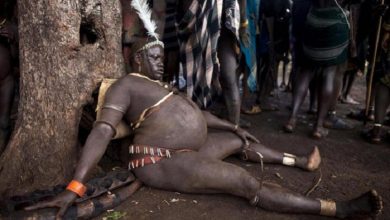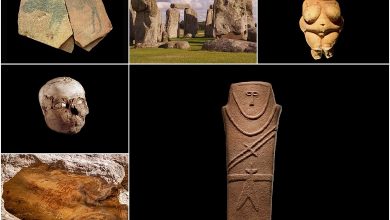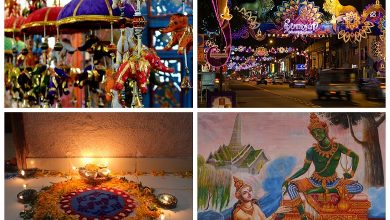Life and times of Malik Ambar: How an Ethiopian boy, sold by his parents, became Indian rich man
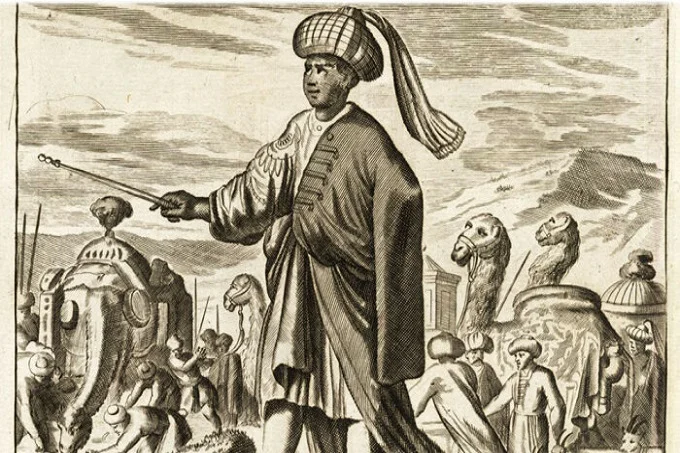
Malik Ambar, a boy from Ethiopia, was sold into slavery by his parents and handed from hand to hand until he reached India, where he had an extraordinary opportunity for a new life.
Ambar’s hands were tied by his master’s death, which released him. He wasted no time and seized the chance by assembling a mercenary army of locals and other Africans who were loyal and committed to him. And soon, long, Malik had ascended to the throne of the prosperous kingdom he had previously served, only to serve it even more faithfully than before.
The early life of Malik Ambar
Wako Chapu, the birth name of Malik Ambar, was born in 1548 on the borders of Harar, a pagan territory. Even though little is known about Chapu’s youth, academics believe he was already an extremely clever lad at the time, freely traversing the rough, arid hills of his home area, an ability that might actually be useful later in life. But not everything was as it seemed. In order to live, his parents were compelled to sell their own son into slavery due to poverty and desperation.
Over the following several years, he faced many challenges. He was regularly carried across the Indian Ocean in squalid dhows, changing ownership at least three times among a network of slave dealers in the Indian Ocean. He became a somber “Ambar”—Arabic for amber, a brown gemstone—along the road after converting to Islam.
That all changed when Ambar arrived in Baghdad. Mir Qasim al-Baghdadi, the merchant who bought him, recognized the spark in Ambar. Instead of sending the young man to blackwork, he decided to educate him. His stay in Baghdad would play an important role in Malik’s future successes.
When Ambar landed in Baghdad, everything changed. The trader who acquired him, Mir Qasim al-Baghdadi, noticed the spark in Ambar. He opted to educate the young guy rather than send him to dirt work. His time in Baghdad will be crucial to Malik’s future career.
From slave to master
Mir Qasim, accompanied by Ambar, came to India in 1575 on a commercial trip. Genghis Khan, the prime minister of the Deccan state of Ahmednagar, saw him and wanted to purchase him. Genghis Khan, like Ambar, was not only an Indian aristocrat but also an Ethiopian.
The Deccan in medieval times was a promised land. The region’s riches and battle for power created a one-of-a-kind military meritocracy in which anybody might advance well beyond their station. Before Genghis Khan and Ambar, many Siddis (former African slaves) became generals or lords, and many more would do so after them. Ambar’s new master’s life evidence of amazing social mobility must have come as a pleasant surprise, as he quickly started to stand out.
In time, he grew to be virtually a son to Genghis, who gained crucial new abilities in administration and military leadership as a result of his service.
Ambar became an independent man when Genghis Khan died in the 1580s and an exceedingly resourceful one at that. In a short time, he was able to assemble additional Africans and Arabs to establish a mercenary organization.
Malik Ambar and his soldiers departed Ahmednagar and labored for rent all throughout the Deccan for a spell. Under his capable guidance, his motley gang developed into a powerful army of a thousand and a half men. Ambar was awarded the title “Malik,” which means “lord or master,” for his military and administrative prowess. He returns to Ahmednagar in the 1590s, where the Mughal Empire had arisen as a new danger.
The Marathas and exile
Even though Ahmednagar was now under the Mughal rule, several lords in the interior continued to resist. Malik Ambar, a veteran of innumerable fights who had toughened in the Deccan highlands, was one of them. Ambar became stronger in exile, thanks partly to the rising number of Ethiopians who arrived in the Deccan. However, he was increasingly relying on local talent.
The Marathas were a warlike people who had mastered the art of following enemy forces and destroying their supply lines. They were very deadly as light cavalry and had perfected the art of pursuing enemy troops and destroying their supply lines. Despite the fact that the sultanates had only lately started to hire these excellent riders, Malik Ambar was the first to see their actual potential.
Something must have brought the Ambar and the Marathas together. They were hill people who struggled as much with the difficult terrain as they did with the invaders. Ambar’s Ethiopian tribesmen would have the same Marathi allegiance as Ambar. In exchange, he would make use of the Marathas’ mobility and understanding of the local terrain to wreak havoc on the Mughal Empire, just as the Marathas would much later.
The ascension of Malik
Around 1600, Malik had filled the power vacuum left by Sultan Ahmednagari’s Mughal incarceration. The proud nobles would never accept an African ruler, so this last polish had to be retained. As a result, the astute Abyssinian devised a smart political strategy.
In the isolated settlement of Paranda, he found the lone surviving heir to Ahmednagar. He then proceeded to crown Ahmednagar’s Murtaza Nizam Shah II, a weak puppet through whom he could dominate. When the Sultan of Bijapur voiced reservations, he offered the child his own daughter in marriage, pleasing the Sultan but also bringing him even closer to himself.
Ambar’s problems, however, did not stop there. For a decade, he had to strike a balance between the militant Mughals and internal difficulties. He faced a revolt by unhappy generals in 1603 and reached an agreement with the Mughals to concentrate on a new crisis. The insurrection was put down, but Murtaza, the puppet emperor, recognized Ambar’s foes.
Malik was the subject of royal intrigue once again in 1610. The Sultan viewed this as a chance to get rid of Malik, and he plotted to do so. Ambar, on the other hand, learnt about the scheme via his daughter. Before they could act, he ordered the conspirators to be poisoned. He then put Murtaza’s five-year-old son on the throne, who became a lot more loyal puppet as a result.
Administrative Projects
Malik went on the offense after securing the inside front. By 1611, he had retaken Ahmednagar, the Mughals’ ancient capital, and driven them back to the original border. This provided a much-needed reprieve, which Ambar wisely used by retaining more than forty forts as a bulwark against the Mughal Empire.
He subsequently constructed his new capital, Khadki, or Aurangabad as it is now called, directly on the Mughal boundary. Khadki was undoubtedly the finest representation of its creator’s life and ambition, from its multicultural populace to its wonderful monuments to its robust fortifications. The city has grown into a busy metropolis in only 10 years. The Nahr (Neher) water system, which evolved through a lifetime of seeking water, was the most striking feature of the city, not the palaces or the fortifications.
Whether in famished Ethiopia, Baghdadi’s deserts, or escaping the Mughals in the parched Deccan highlands, Ambar’s experience was hampered by a severe lack of water. He had the capacity to locate water in the most unusual settings. Malik has previously attempted to build a water supply for Daulatabad. Although Ambar, like Tugluk before him, departed that city, the experience sharpened his urban planning talents.
His lofty intentions were mocked, but Malik prevailed through sheer tenacity. He was able to supply the demands of hundreds of thousands of inhabitants in the city with a complex network of aqueducts, canals, and reservoirs, transforming the lives of Ahmednagar residents owing to the Nahr, which has lasted to this day.
Ambar spent his money on a variety of enterprises in addition to his wealth. Because of the relative calm, commerce was able to flourish throughout the nation. As a result of this, as well as his administrative changes, he became a major patron of the arts and culture.
Ahmednagar gained reputation and affluence as a result of the construction of dozens of new palaces, mosques, and infrastructure. But, alas, all wonderful things must end someday. The Mughal ceasefire has to be shattered sooner or later.
War
The Mughal Empire and Ahmednagar began hostilities about 1615. Malik had to depend on his tactical ability to beat his greater opponent since he was plainly an outsider. Ambar, a pioneer of guerilla warfare in the Deccan, perplexed Mughals who were used to direct confrontation. He enticed the enemies into his domain. Then he devastated their supply lines with his Maratha raids. In the unrelenting Deccan, the large Mughal troops couldn’t subsist off the soil, and Ambar used their numbers against them.
For the next two decades, Malik effectively ended Mughal growth. Ambar was the sworn adversary of Mughal emperor Jahangir. He unleashed a series of furious tirades at him, and after being sorely disappointed by the Abyssinian, he dreamed of destroying Ambar. And his wishes were soon realized. After Akbar’s death in 1605, Jahangir, or Conqueror of the World (as he called himself), gained the throne.
Nur Jahan married Jahangir in 1611 after her husband died under suspicious circumstances. She swiftly established herself as the true power behind the throne. She is the only eggnog lady whose name has been struck on coins. She controlled the court herself while the emperor was unwell. Nur Jahan went into combat on an elephant to release him after a modest commander stupidly kidnaped him. Malik came face to face with this extraordinary lady.
Jahangir had the unenviable distinction of having two of his sons revolt against him. He blinded his first son. In 1622, there was a second insurrection. Nur Jahan attempted to have her son-in-law proclaimed successor to the throne. Fearing Nur influence Jahan’s on his feeble father, Prince Khurram stood in the way of the two of them.
The rebellious prince would struggle against his father for the next two years. Malik was his most important ally. Despite the fact that Khurram had lost, Jahangir had no choice but to forgive him. This prepared the stage for his future Mughal kingship as Shah Jahan, the man responsible for the Taj Mahal’s construction.
Bhatwadi’s Battle
Malik’s last challenge was scheduled for 1624. The Mughals gathered a considerable army, perhaps enraged by his involvement in the princely insurrection. In addition, the Sultan of Bijapur, who had previously been an ally of Ambar, left the Deccan alliance. The Moguls enticed him by promising him a share of Ahmednagar.
On September 10, the united Mughal and Bijapur armies arrived in the city of Bhatwadi, where Malik was waiting. He took advantage of the heavy rain to demolish a neighboring lake’s dam. The water totally paralyzed the opposing force stationed in the lowlands while he controlled the higher terrain. Ambar initiated nocturnal attacks on the opposing camp while Mughal artillery and elephants faltered.
Enemy troops who had been demoralized started to defect. Finally, Malik led a strong cavalry charge that drove the opposing troops back. Ambar was able to guarantee his kingdom’s independence for many years as a result of this major triumph. It marked the pinnacle of his illustrious career. For two decades, the power of the enormous Mughal Empire attempted and failed to eliminate him. But Ambar’s time was running out.
The death of Malik Ambar
At the age of 78, Malik died peacefully in 1626. As Prime Minister, his son succeeded him but he was unable to succeed him. In 1636, Shah Jahan, Ambar’s old friend, ultimately captured Ahmednagar, putting a stop to four decades of resistance.
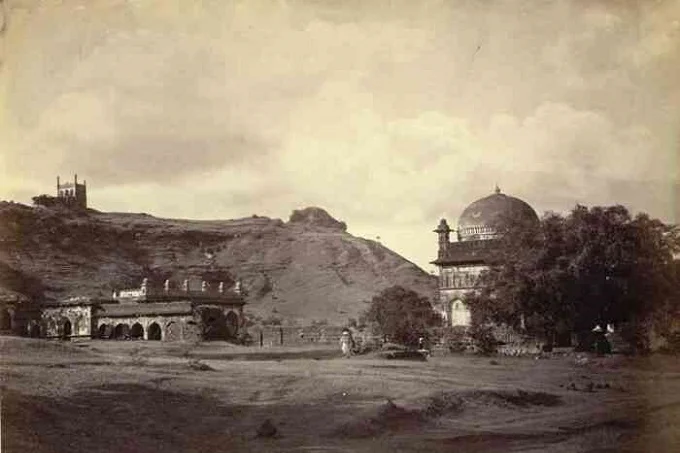
Malik Ambar’s legacy is still alive and well today. The Marathas initially rose to prominence as a military and political power under his reign. He was a counselor to the great Marathi chief Shahaji Bhosale, whose son Shivaji built the Marathi kingdom. In a spirit of vengeance for Malik Ambar, the Marathi would be the ones to destroy the Mughal Empire.
Aurangabad, a lively and varied Indian metropolis with over a million Hindus, Muslims, Buddhists, Jains, Sikhs, and Christians, bears his imprint. Malik Ambar is, probably most significantly, a symbol. It represents the tremendous flexibility of the human race as the most renowned member of South Asia’s Siddi society (which has many more tales to give from its long past, from the invincible sea kingdom of Janjir to Sidi Badr, the tyrannical ruler of Bengal).

